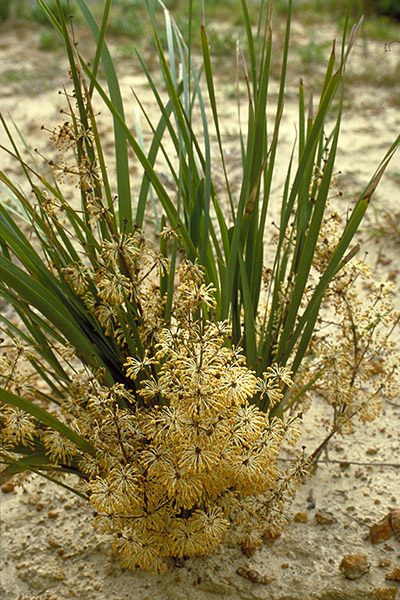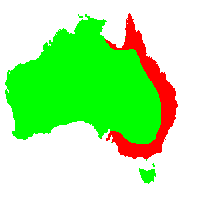General Description:
Lomandra is a genus of about 50 species all of which occur in Australia with two species extending to islands to the north. They are dioecious plants with male and female flowers occurring on different plants. The most commonly seen species in cultivation is L.longifolia, a large plant with strap-like leaves.
Lomandra multiflora is a small grass-like plant with stiff grey-green leaves from 250 – 850 mm high. The creamy, yellow flowers occur in clusters around the base of the leaves during spring.
There are two subspecies: L.multiflora subsp.multiflora occurs in southern Papua New Guinea, the north-eastern tip of the Northern Territory and then from Cape York in a continuous distribution, coast to tablelands, to west of Melbourne to about the Grampians. L.multiflora subsp.dura differs in the flowers being more of less hidden in hard bracts. This subspecies is restricted to South Australia in the southern Flinders, Mt.Lofty Ranges, Yorke and Fleurieu Peninsulas.
Very few lomandras are in general cultivation and L.multiflora is in this category. Limited experience indicates that it is a hardy plant which would be an ideal feature in a rockery or as a foreground plant in a bush garden. Plants should succeed in moist, well drained soils in a range of climates. However, given the wide distribution of the species it would be wise to select propagating material from plants growing in a similar climate to that where it is to be cultivated. Plants should be grown in full sun or partial shade.
Propagation is reported to be reasonably easy from seed. Established plants could probably also be propagated by division.

Lomandra multiflora
Photo: Brian Walters
 Australian Native Plants Society (Australia)
Australian Native Plants Society (Australia)













